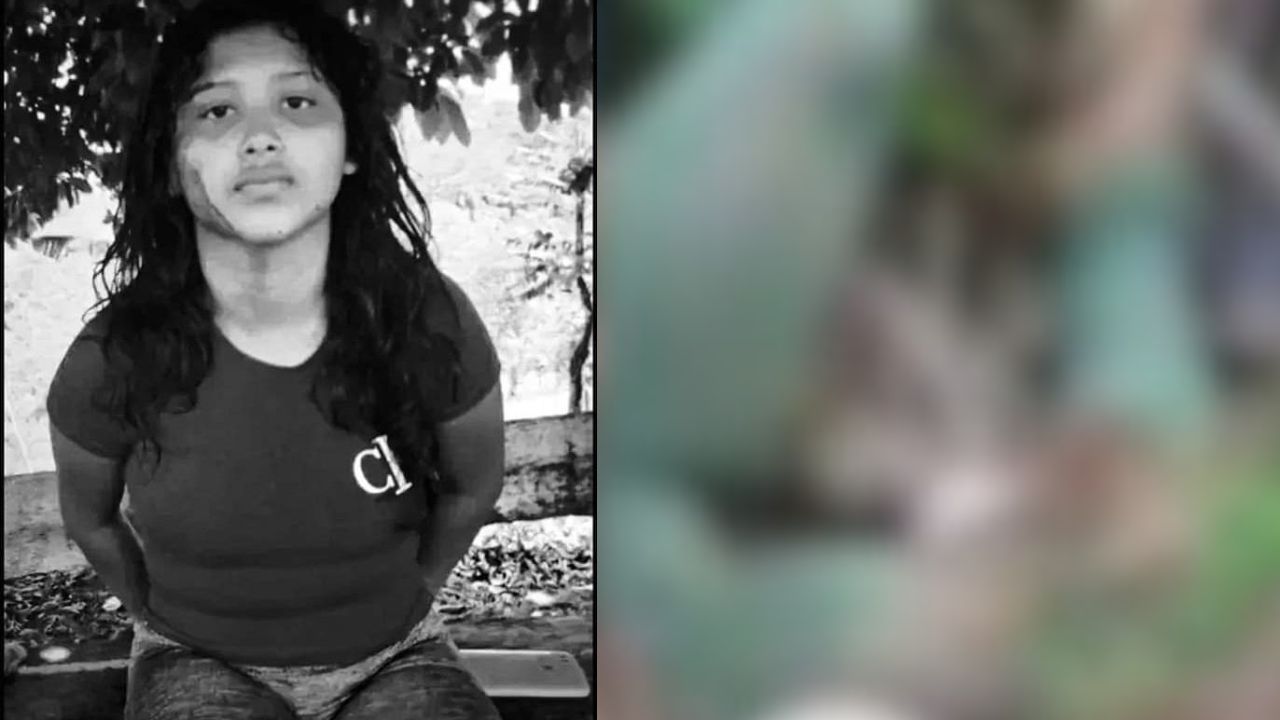Maria Camila Villalba Original Video on Safety and Digital
In a recent disturbing event that captured global attention through social media, a viral video from Brazil documents a gruesome act of violence that has sparked widespread outrage and concern. Known as the Maria Camila Villalba original video, the footage reveals a harrowing scene in which a man allegedly murders his own father. The incident reportedly occurred after the father delivered a sermon to his son, which supposedly acted as a catalyst for the violent reaction.
The video, which quickly circulated online, shows the son, whose identity has yet to be disclosed, confessing to the brutal act. According to the video, the crime took place in the early hours of the morning in their family home. The camera captures the son casually preparing a snack while recounting the details of how he executed the murder. He describes cutting his father’s throat and tongue, inflicting fatal wounds that were visible in the ghastly scene laid out in the victim’s bedroom.
This shocking footage not only raises questions about the motives and mental state of the perpetrator but also highlights the profound impact of digital media in amplifying personal tragedies into global news. The Maria Camila Villalba original video serves as a stark reminder of the dual edges of social media: while it can illuminate injustices and foster community support, it also has the power to spread violence and sensationalism swiftly across the digital landscape, often before the implications of such broadcasts can be fully understood or managed. This incident underscores the ongoing debate about the responsibilities of social media platforms in curbing the dissemination of violent content and the ethical considerations that come with reporting and sharing such sensitive material.
| Event Description | Viral video from Brazil capturing a gruesome act of violence where a son allegedly murders his father after a sermon. |
|---|---|
| Details of the Incident | The crime took place in the early hours in the family home. The son confesses to cutting his father’s throat and tongue, leading to fatal wounds. |
| Video Impact | The video quickly circulated online, showing the son preparing a snack while describing the murder. |
| Significance | Highlights the impact of digital media in turning personal tragedies into global news, and raises ethical questions about social media’s role in spreading violent content. |
Contents
The Incident Details
The chilling content of the “Maria Camila Villalba original video” reveals a son, yet to be identified, making a calm, yet disturbing confession of having murdered his father. Captured in their home, the video exposes the grim aftermath of a heated altercation which escalated fatally. The victim, known only as Francisco Pereira, suffered severe and fatal injuries, with visible cuts to his neck and tongue—a horrifying sight that underscores the brutality of the act.
In the video, the son describes the sequence of events with a disturbing nonchalance. He details how, following a sermon or admonition from his father, tensions rose, leading to the tragic outcome. The son’s detailed recounting of his actions during the confession adds a layer of horror to the viewer’s experience, presenting a raw and unfiltered glimpse into the moments leading up to the violence.

The video was recorded around 3 a.m., providing a stark and eerie setting for the confession. The timing suggests a spontaneous decision to film, perhaps driven by a mix of guilt and a compulsion to confess. The environment in the video is somber, with the only light coming from within the kitchen where the son prepares food, seemingly unaffected by the gravity of his actions.
His behavior throughout the video is unsettling. He alternates between making jokes about his father’s state, shown in a disturbingly casual manner, and acknowledging the severity of his actions. His conflicting expressions of remorse and mockery paint a complex picture of his psychological state at the time.
| Content of the Video | The “Maria Camila Villalba original video” shows a son confessing to the murder of his father, Francisco Pereira, after a heated altercation. The victim suffered severe cuts to his neck and tongue. |
|---|---|
| Details of Confession | The son describes the events leading to the murder with unsettling calmness, detailing the escalation after a sermon from his father. |
| Recording Circumstances | The video was recorded around 3 a.m. in their kitchen, suggesting a spontaneous decision to confess under a mix of guilt and compulsion. |
| Behavior of the Perpetrator | The son’s behavior is disturbing as he alternates between making jokes about the situation and showing signs of remorse, providing insight into his complex psychological state. |
The Viral Spread of the Video
The video quickly gained traction on various social media platforms, propelled by its shocking content and the natural human response to extreme events. As viewers shared the video, it sparked a broad spectrum of reactions, from outrage and disgust to profound sadness. Media outlets picked up the story, further amplifying its reach and adding layers of commentary and analysis that influenced public perception.
The viral nature of the video also opened up discussions on the role of social media in documenting and disseminating real-life horrors. The rapid spread through networks highlighted the uncontrolled pace at which such content can move, often outpacing the ability of platforms to moderate or contextualize the information being shared.
Video spread online
maria-camila-villalba-original-video.mp4
The dissemination of the “Maria Camila Villalba original video” raises significant legal questions, particularly concerning the legality of sharing graphic content involving real crimes. Many jurisdictions have laws against the distribution of content that can be considered obscene or harmful, which includes videos depicting acts of violence. The ethical implications are also profound.
The privacy of the victim and their family is compromised when such footage is made public. Moreover, the psychological impact on viewers who are unwittingly exposed to such extreme violence can be severe, contributing to trauma or desensitization. Ethically, the promotion of violence through such videos can incite similar acts or trivialize the seriousness of committing such crimes.

This case serves as a critical point of reflection for both legal authorities and social media platforms, challenging them to consider how they can better manage the balance between freedom of expression and the protection of public welfare in the digital age.
| Video Virality | The video spread quickly across social media due to its shocking content, triggering a range of reactions including outrage and sadness. Media coverage amplified its reach and influenced public perception. |
|---|---|
| Social Media’s Role | The rapid dissemination highlighted the challenges social media platforms face in moderating real-time, graphic content, sparking debates on their role in broadcasting real-life horrors. |
| Legal Implications | The sharing of graphic content like this video raises legal concerns regarding the distribution of violent material, which is often restricted under laws against obscenity or harmful content. |
| Ethical Implications | The video compromises the privacy of the victim and family, and poses psychological risks to viewers. Ethically, it also raises concerns about promoting violence and desensitization to serious crimes. |
Consequences and Public Safety Concerns
The psychological effects of the “Maria Camila Villalba original video” on viewers and the local community are profound and multifaceted. Psychologists suggest that exposure to such graphic content can lead to a range of emotional disturbances, from immediate shock and disgust to long-term anxiety and stress disorders. For the local community where the crime occurred, the incident not only stirs a sense of insecurity and sorrow but also damages the communal trust and social cohesion.
The broader implications of sharing violent content online are equally significant. Such exposure can desensitize individuals to violence, reducing their empathetic responses to real-world suffering. Additionally, it can create an atmosphere of fear and pessimism, affecting people’s outlook on safety and humanity. The public discourse around these incidents often questions the moral responsibilities of individuals and platforms in sharing and consuming this type of content.

In response to the incident depicted in the video, legal actions have been initiated against the son for the murder of his father. The legal proceedings are likely to address not only the act of murder but also the filming and distribution of the crime, which adds layers of legal complexity to the case. Moreover, individuals who shared the video widely might also face scrutiny under laws related to the distribution of violent content, depending on local jurisdictional regulations concerning digital content and its dissemination.
Law enforcement agencies, along with social media platforms, have responded with increased vigilance and stricter control measures to prevent the spread of such videos. Social media platforms are under continuous pressure to enhance their content moderation strategies, employing both technological solutions, like algorithms and AI-driven tools, and human oversight to detect and remove content that violates their policies on violence and gore.
| Psychological Effects on Viewers and Community | Exposure to the video leads to emotional disturbances ranging from shock and disgust to long-term stress disorders. It undermines security and trust within the local community, affecting social cohesion. |
|---|---|
| Implications of Sharing Violent Content | Viewing violent content can desensitize people to violence, diminish empathy, and foster an atmosphere of fear and pessimism about safety and humanity. |
| Legal Actions Initiated | Legal proceedings against the son include charges related to the murder and potentially the filming and distribution of the crime. Others who shared the video may face legal scrutiny depending on local laws. |
| Law Enforcement and Social Media Response | Increased vigilance and stricter control measures are being implemented by law enforcement and social media platforms to curb the spread of violent content, using both technology and human oversight. |
The case of the “Maria Camila Villalba original video” brings to the forefront several critical issues related to digital media ethics, public safety, and community well-being. The incident not only highlights the severe psychological impacts on viewers and the local community but also underlines the rapid dissemination of violent content across social media platforms, challenging their content moderation practices.
This tragic event serves as a stark reminder of the responsibilities that come with social media usage—both for users and platform operators. It underscores the need for a balanced approach that respects freedom of expression while protecting viewers from harmful content. Furthermore, it prompts a necessary dialogue about the societal impacts of such incidents, urging stakeholders to rethink the role of digital platforms in shaping public discourse and safety. This dialogue is essential for developing more effective strategies to manage the distribution of sensitive content, ensuring that the internet remains a space for positive engagement rather than a venue for amplifying violence.
Global News -Shocking Footage Pool Dive Gone Wrong Video Original Results
Behind the More Passion, More Energy Original Video
Ray William Johnson Video A Pioneer in YouTube Commentary
Replicating Stunts from the 1 Man 1 Jar Original Video
Dilemma of Sharing Nikki Catsouras Footage and Photos
Crystal McKinney Photos from Her Modeling Career
Mystery The Search for Lost Hillsborough Disaster Footage